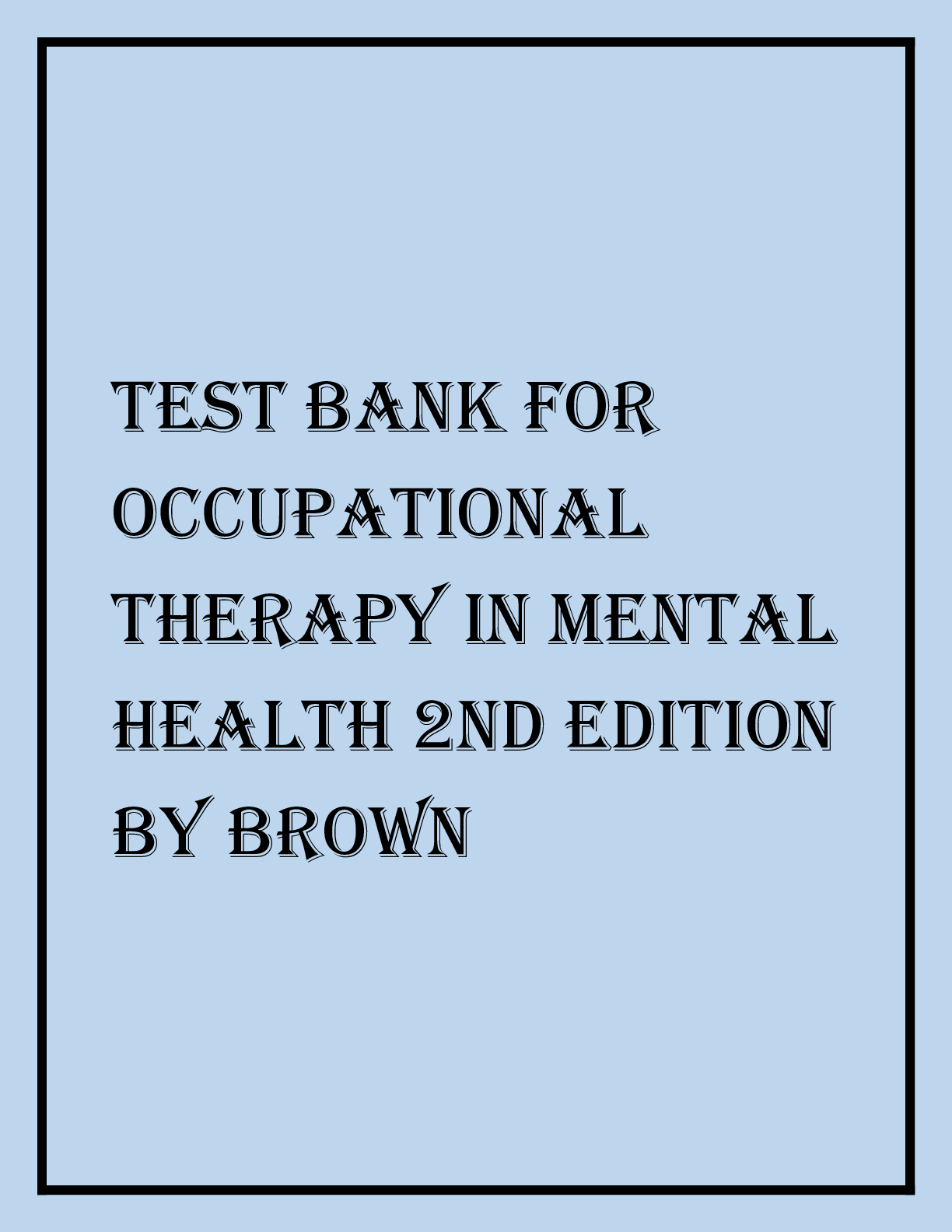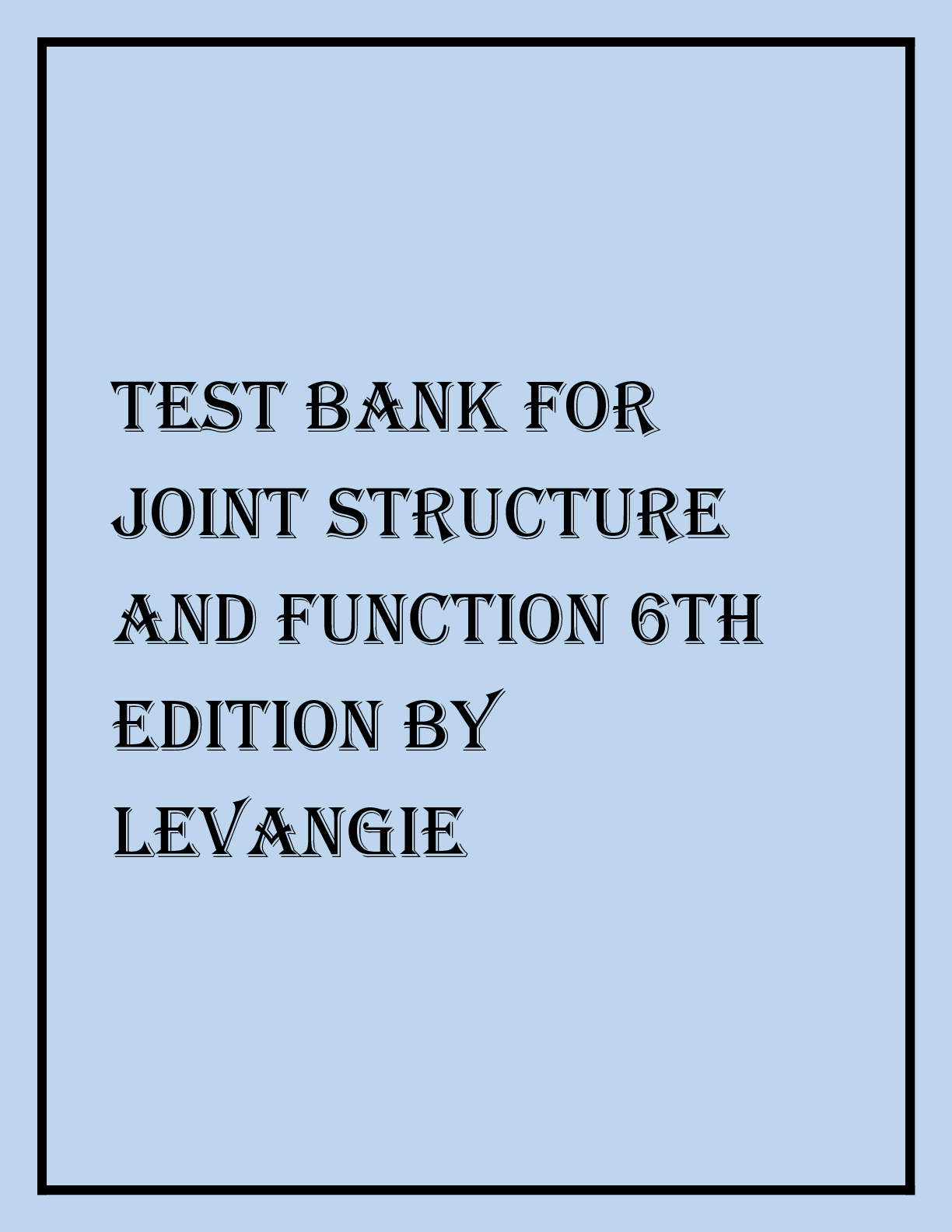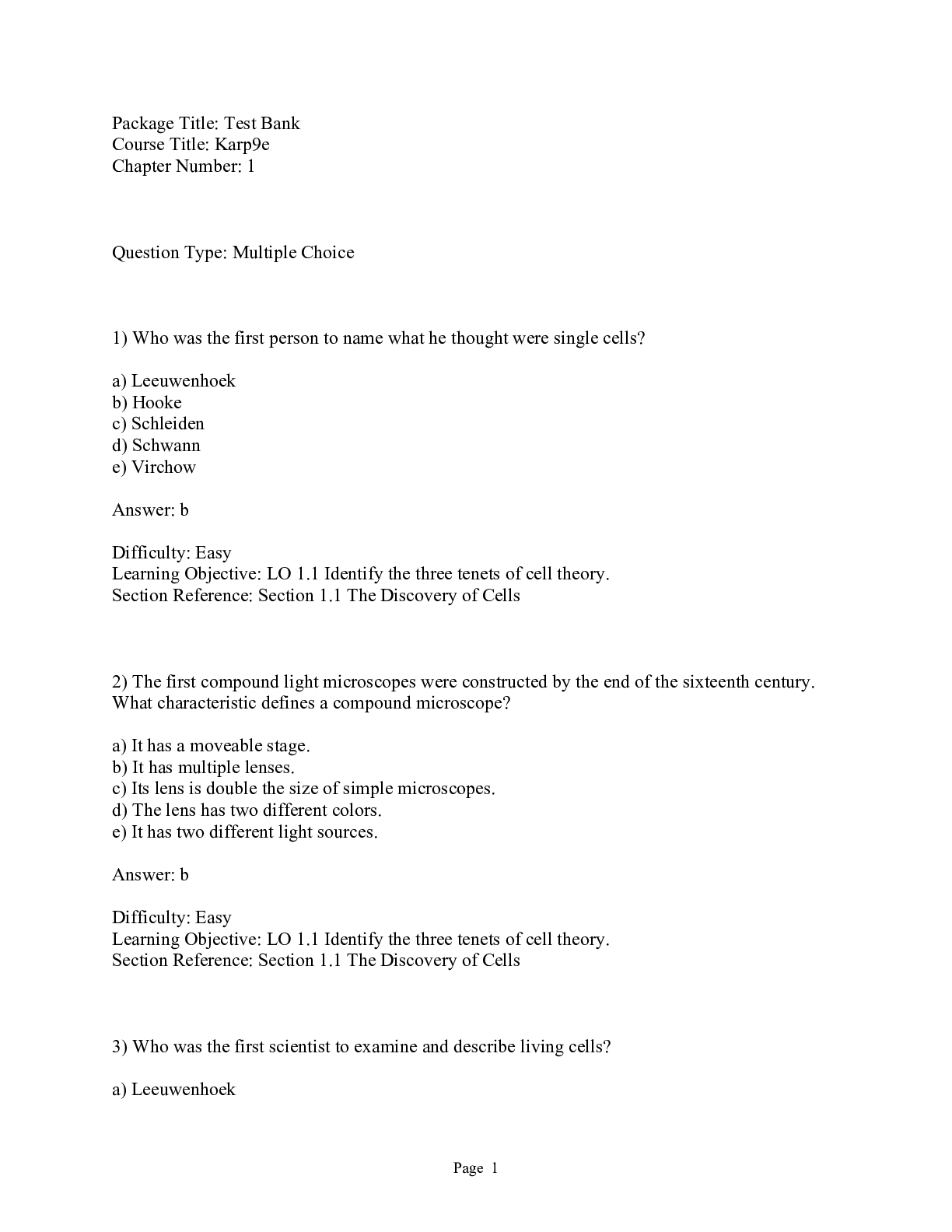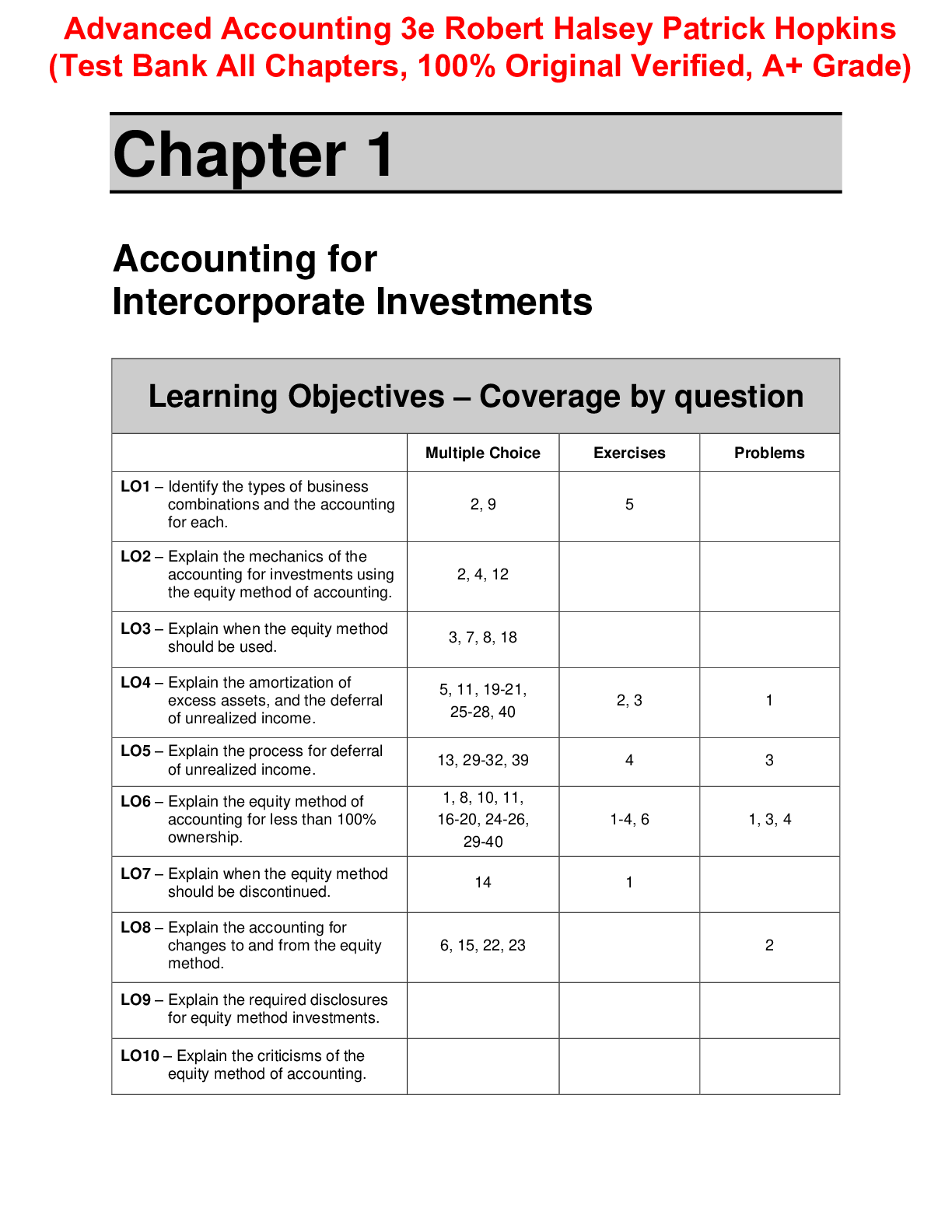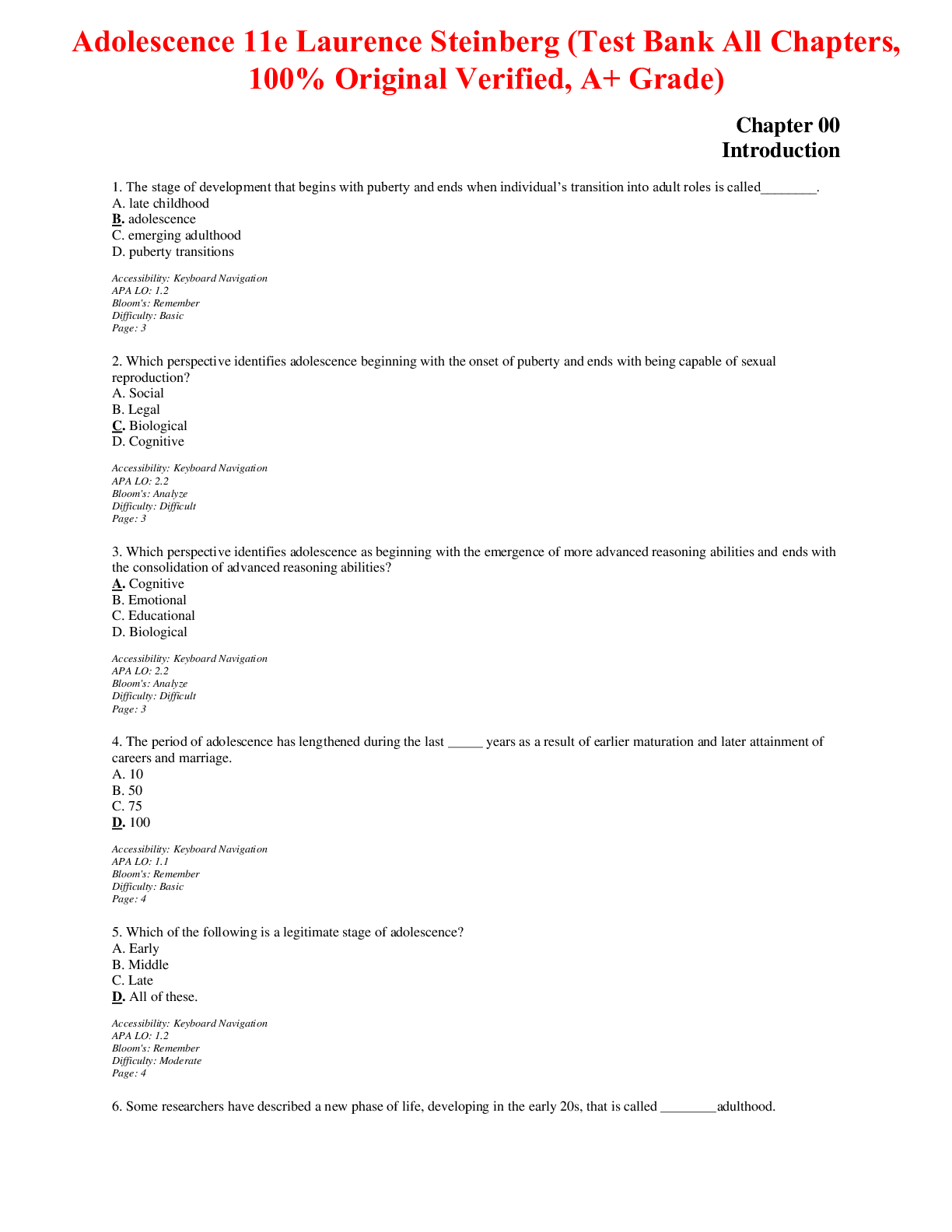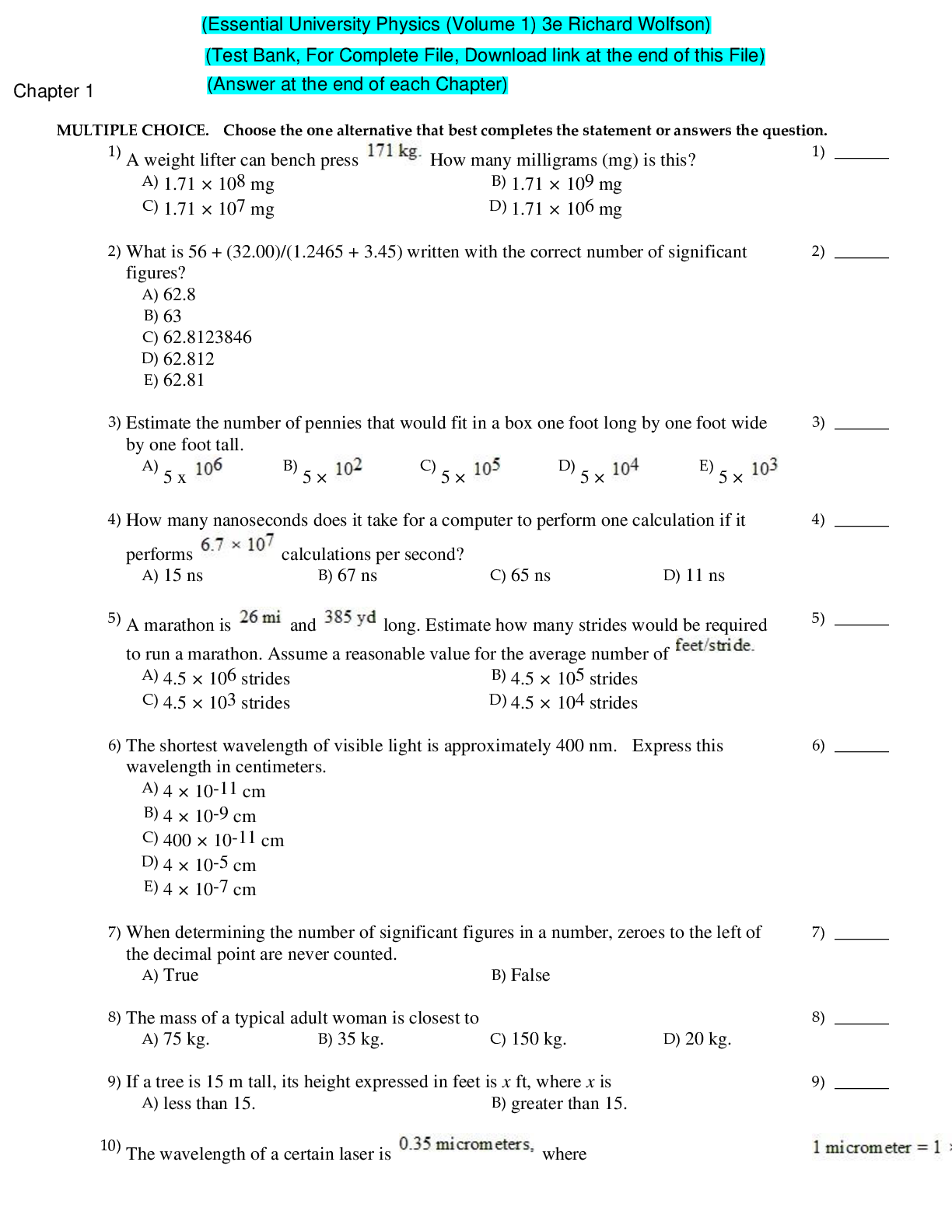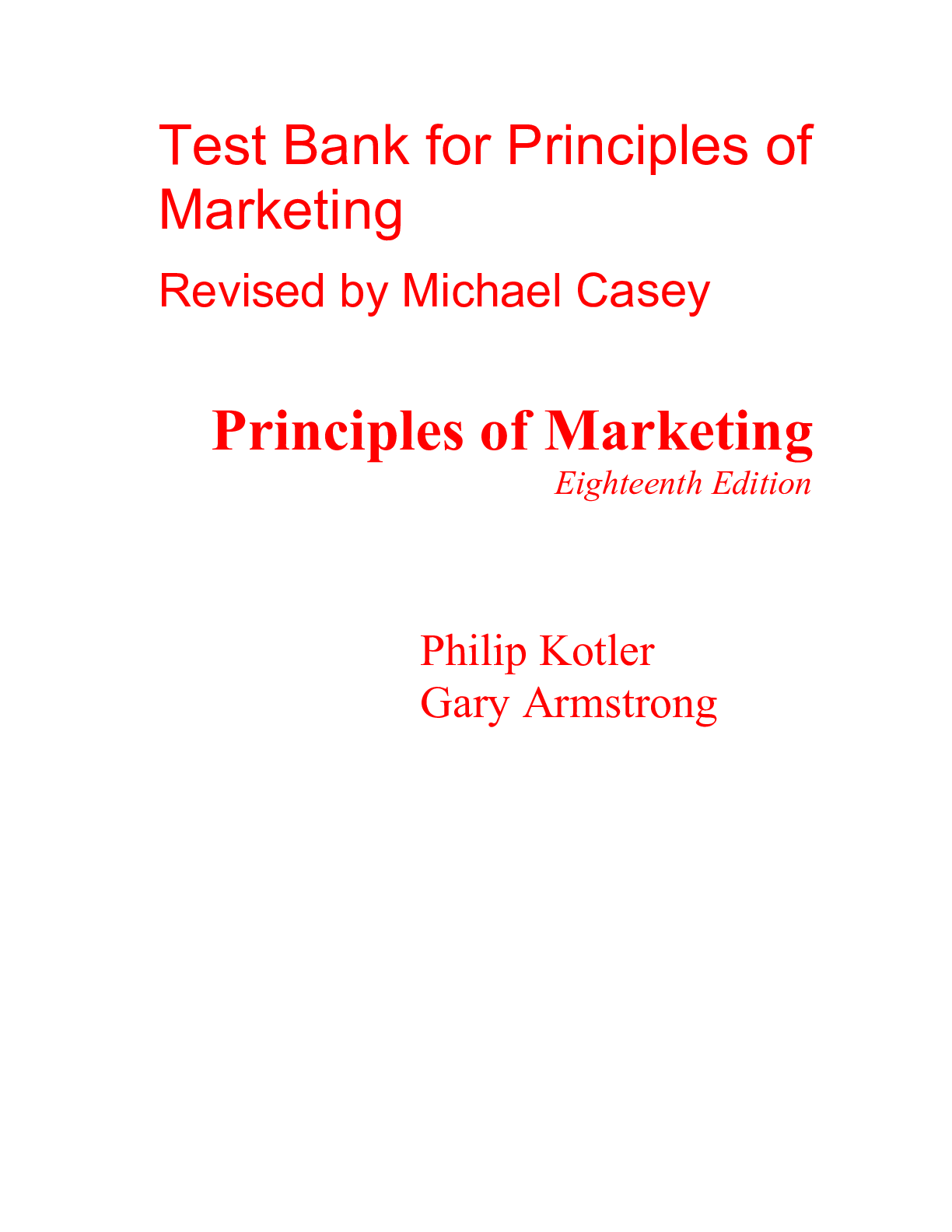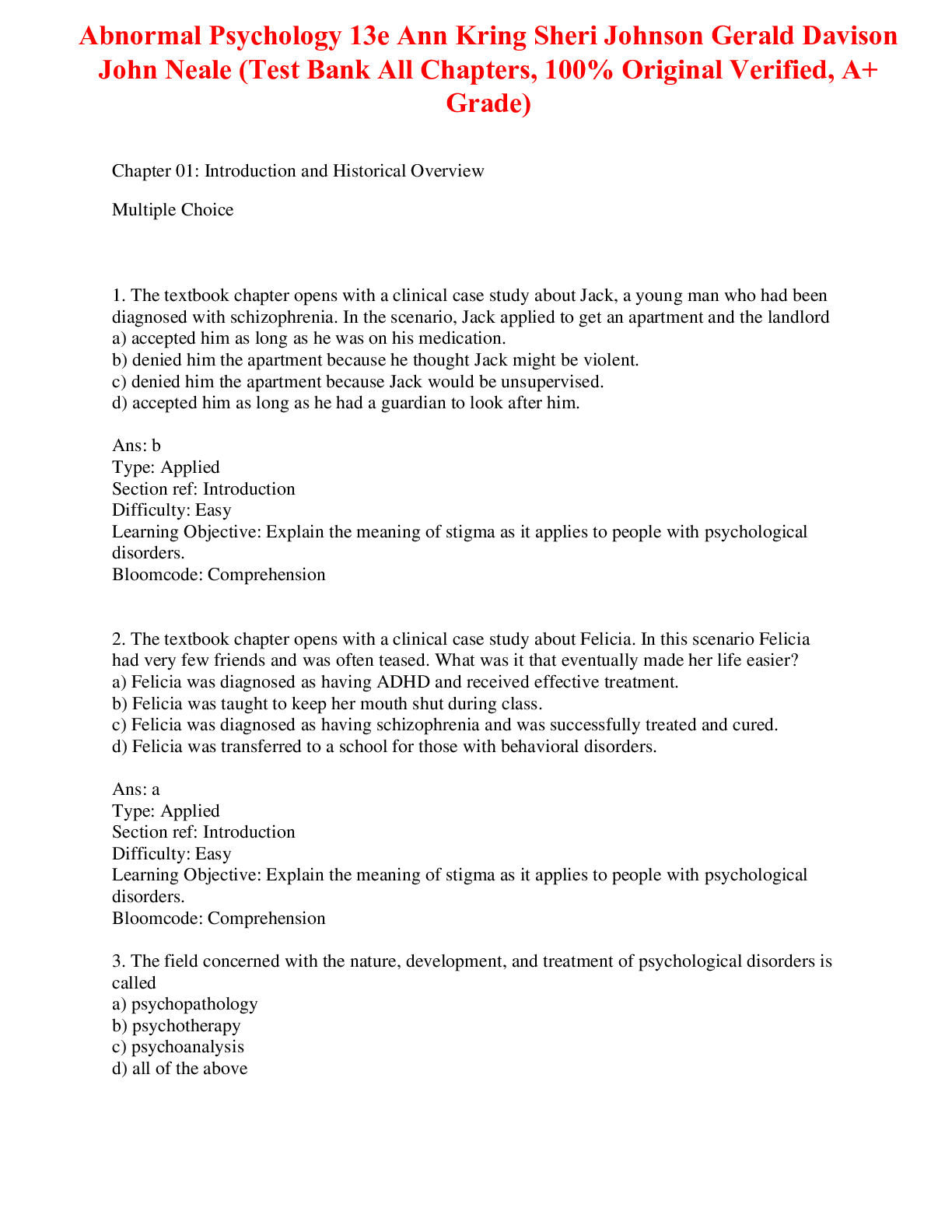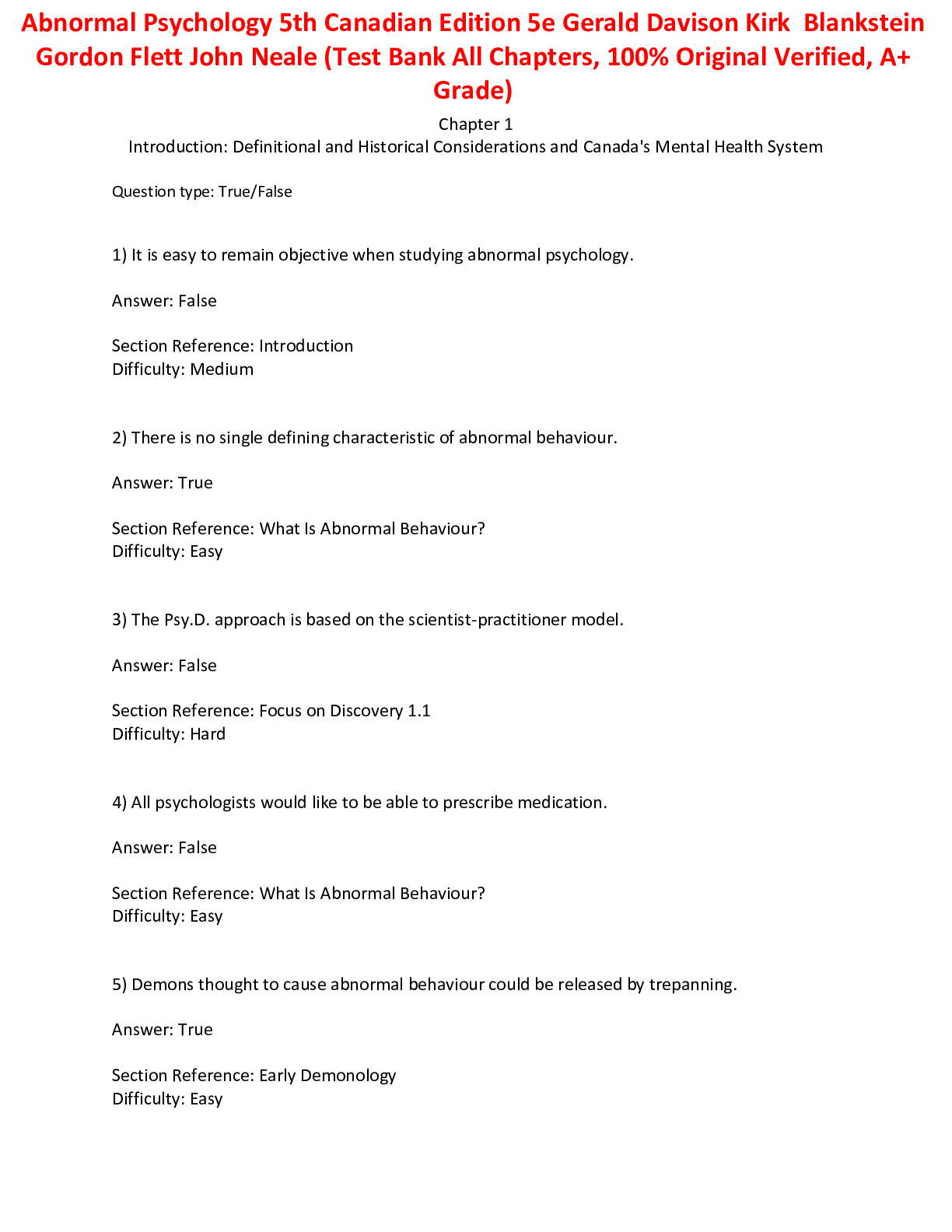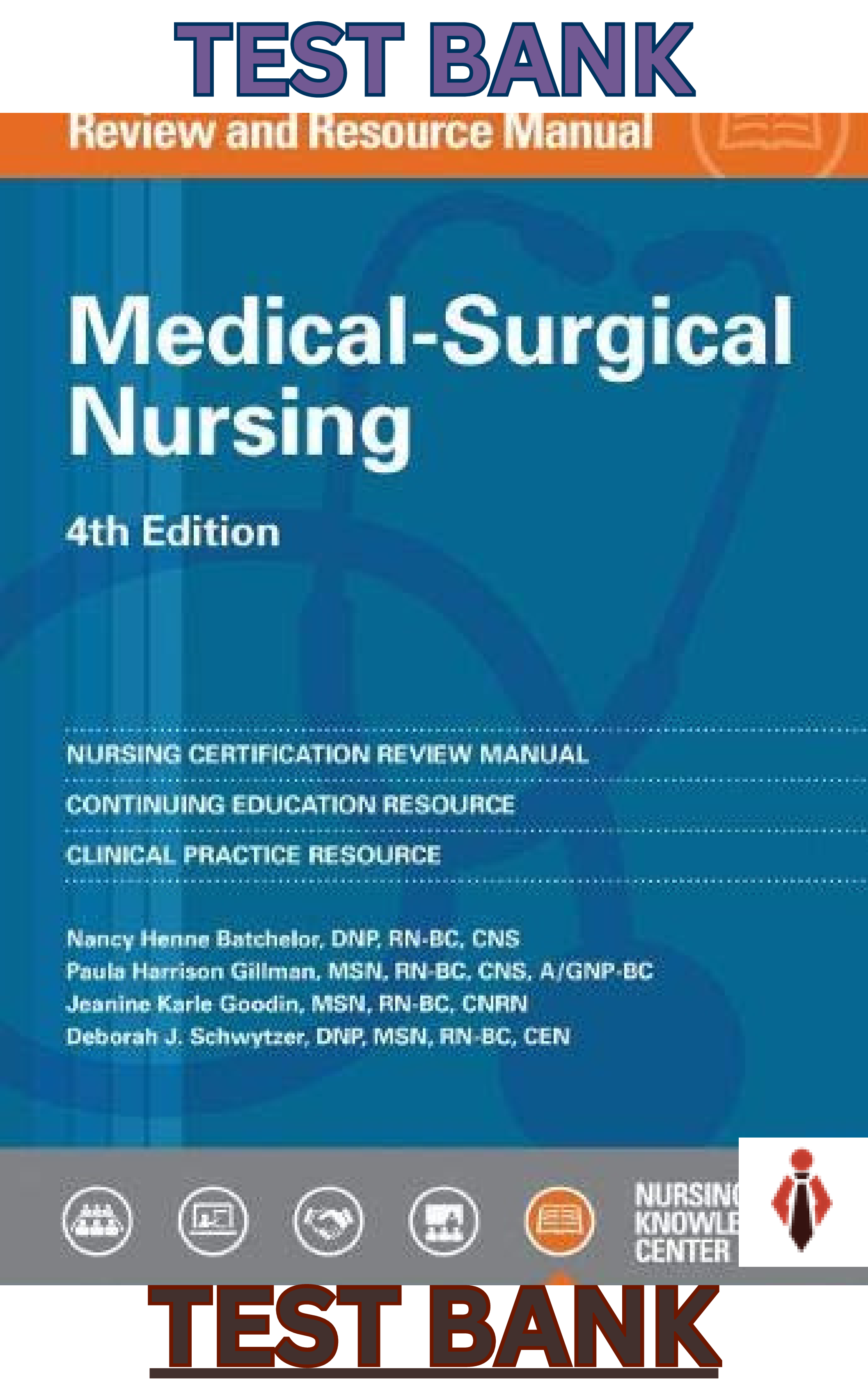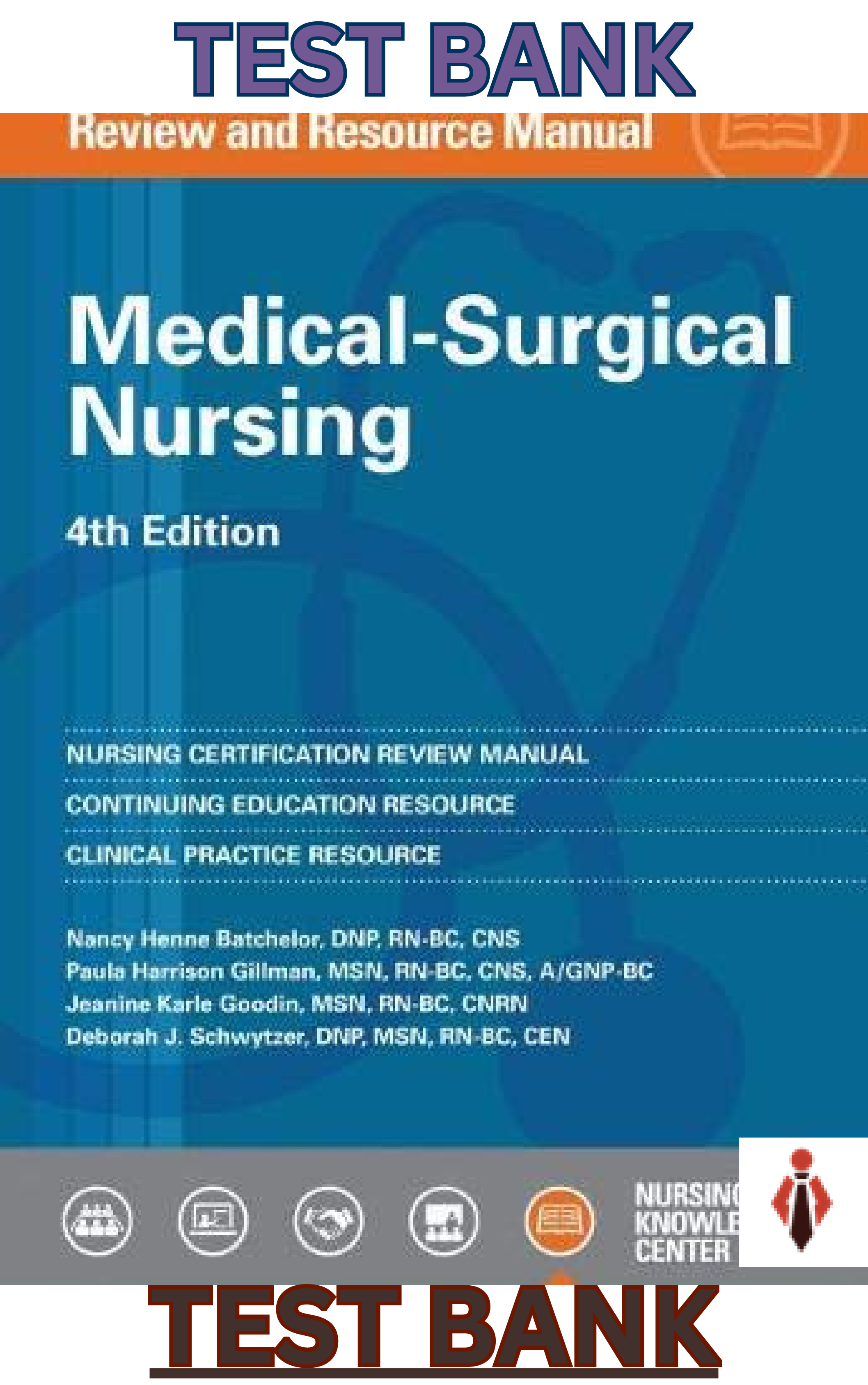Biology > TEST BANK > Test Bank for Karp’s Cell and Molecular Biology, 9th Edition, Gerald Karp, Janet Iwasa, Wallace Ma (All)
Test Bank for Karp’s Cell and Molecular Biology, 9th Edition, Gerald Karp, Janet Iwasa, Wallace Marshall
Document Content and Description Below
Package Title: Test Bank Course Title: Karp9e Chapter Number: 1 Question Type: Multiple Choice 1) Who was the first person to name what he thought were single cells? a) Leeuwenhoek b) Hooke c) ... Schleiden d) Schwann e) Virchow Answer: b Difficulty: Easy Learning Objective: LO 1.1 Identify the three tenets of cell theory. Section Reference: Section 1.1 The Discovery of Cells 2) The first compound light microscopes were constructed by the end of the sixteenth century. What characteristic defines a compound microscope? a) It has a moveable stage. b) It has multiple lenses. c) Its lens is double the size of simple microscopes. d) The lens has two different colors. e) It has two different light sources. Answer: b Difficulty: Easy Learning Objective: LO 1.1 Identify the three tenets of cell theory. Section Reference: Section 1.1 The Discovery of Cells 3) Who was the first scientist to examine and describe living cells? a) Leeuwenhoek b) Hooke c) Schleiden d) Schwann e) Virchow Answer: a Difficulty: Easy Learning Objective: LO 1.1 Identify the three tenets of cell theory. Section Reference: Section 1.1 The Discovery of Cells 4) Who is generally credited with the discovery of cells? a) Leeuwenhoek b) Hooke c) Schleiden d) Schwann e) Virchow Answer: b Difficulty: Easy Learning Objective: LO 1.1 Identify the three tenets of cell theory. Section Reference: Section 1.1 The Discovery of Cells 5) Despite being correct about the first two tenets of the Cell Theory, Schleiden and Schwann made an error about another central feature of cells. What was their mistaken claim? a) They believed that all cells were smaller than 2 µ in diameter. b) They claimed that all cells were exactly the same in every detail. c) They described cells as immortal. d) They agreed that cells could arise from noncellular materials. e) They stated that all cells had nuclei through their entire existence. Answer: d Difficulty: Medium Learning Objective: LO 1.1 Identify the three tenets of cell theory. Section Reference: Section 1.1 The Discovery of Cells 6) Which of the following characteristics is NOT a basic property of cells? a) Cells carry out a variety of emotional reactions. b) Cells engage in numerous mechanical activities. c) Cells generally respond to stimuli. d) Cells are capable of self-regulation. e) Cells evolve. Answer: a Difficulty: Easy Learning Objective: LO 1.2 Explain the importance of the fundamental properties shared by all cells. Section Reference: Section 1.2 Basic Properties of Cells 7) Which of the following statements accurately characterize cells? a) Cells are highly complex and organized. b) Cells possess a genetic program and the means to use it. c) Cells are capable of producing more of themselves. [Show More]
Last updated: 1 year ago
Preview 1 out of 31 pages
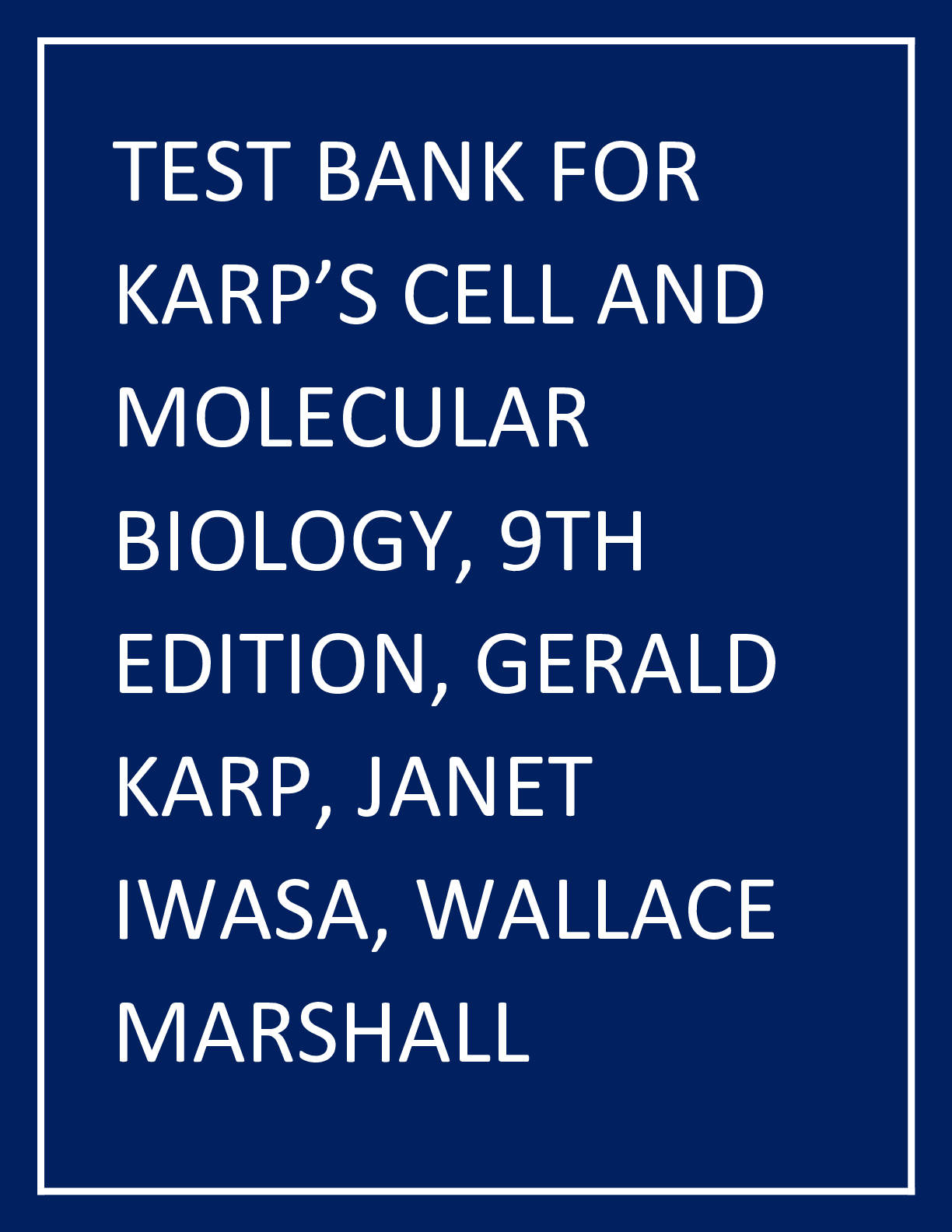
Reviews( 0 )
Document information
Connected school, study & course
About the document
Uploaded On
Dec 29, 2022
Number of pages
31
Written in
Additional information
This document has been written for:
Uploaded
Dec 29, 2022
Downloads
0
Views
44


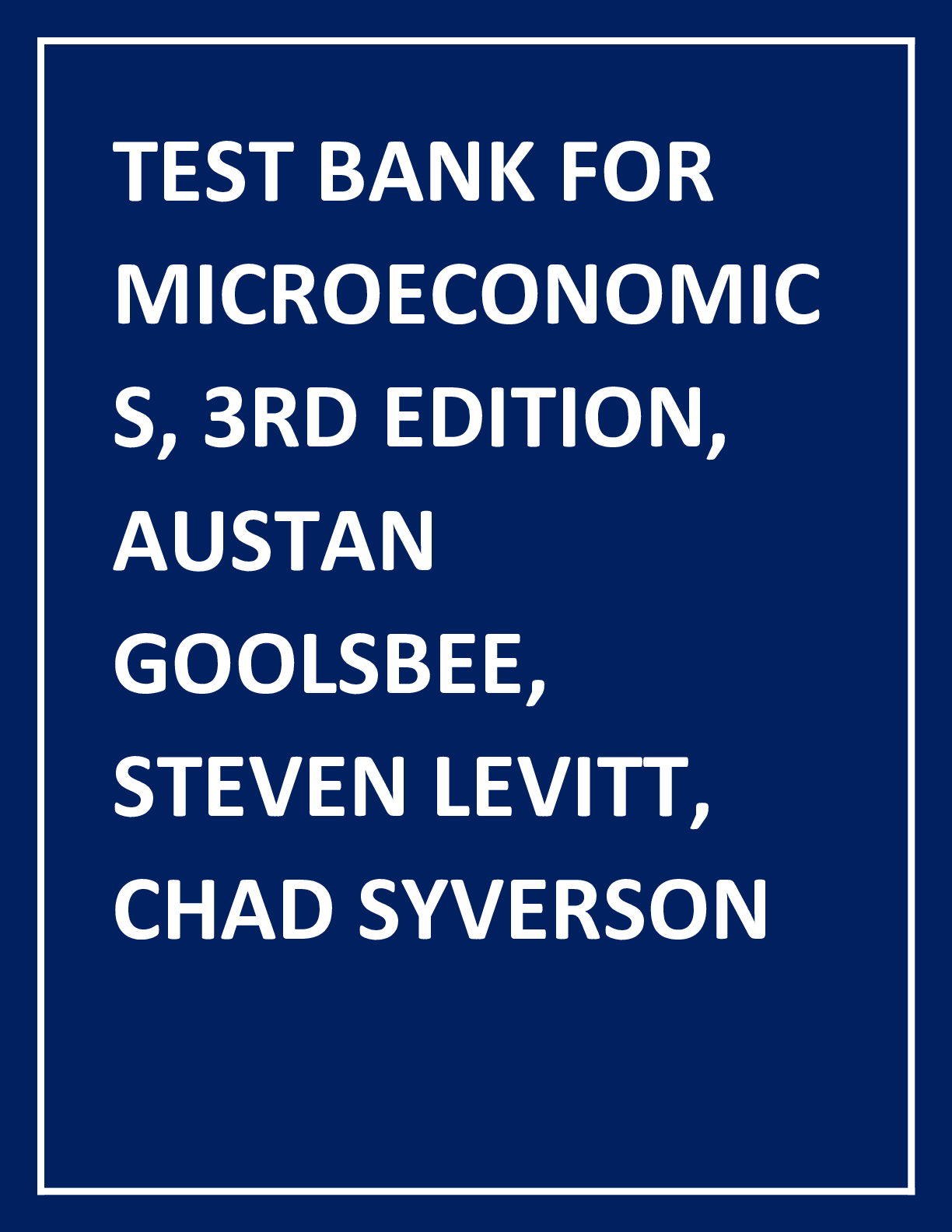
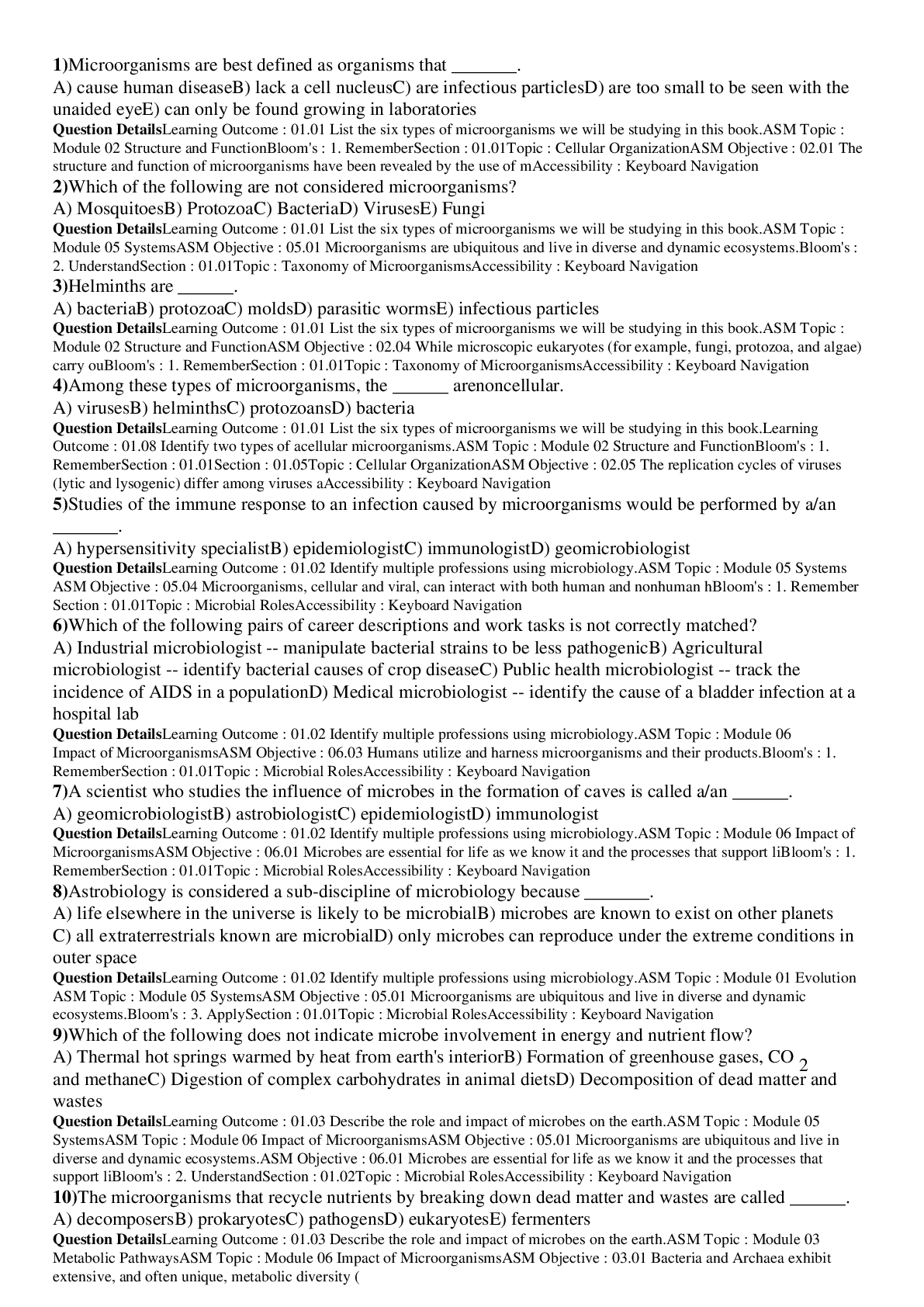
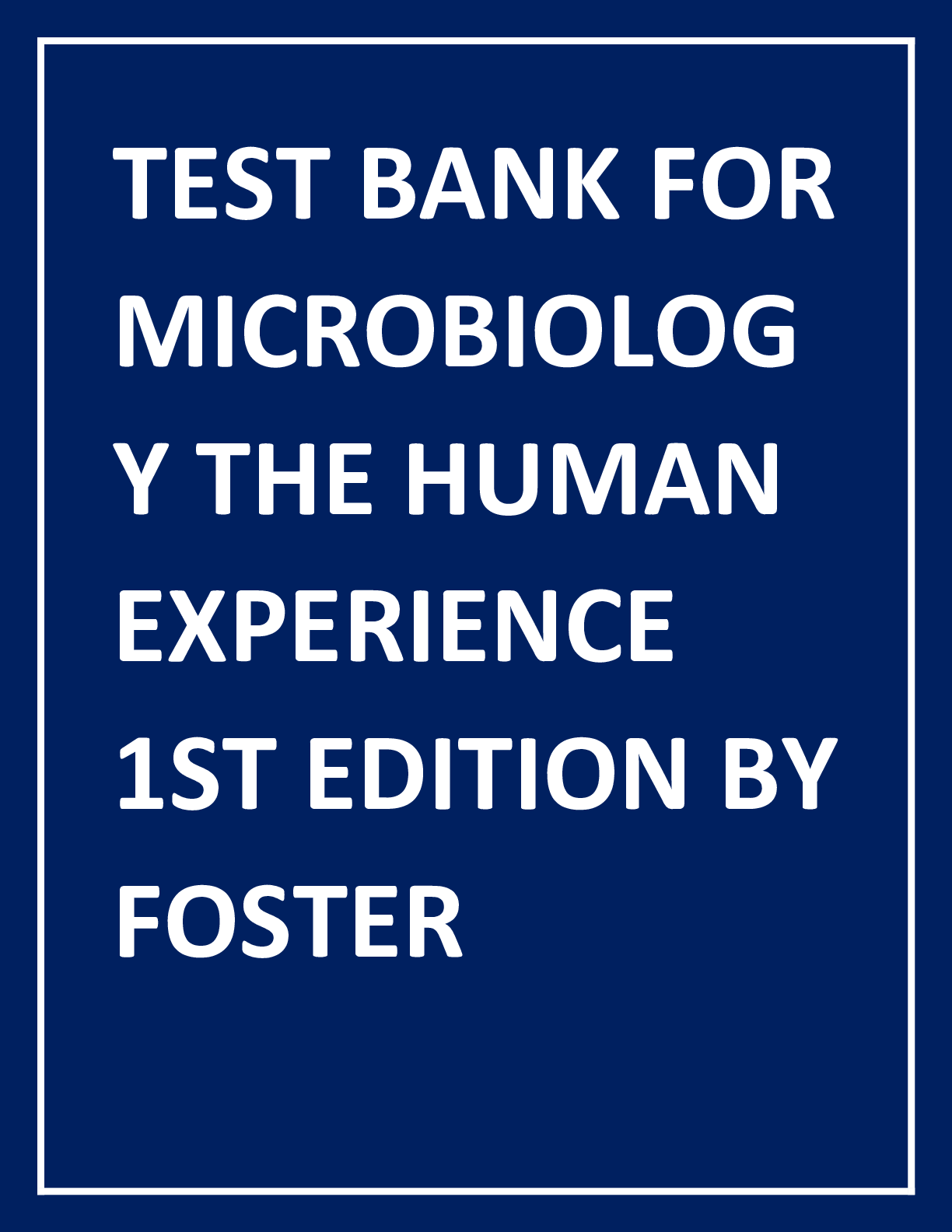
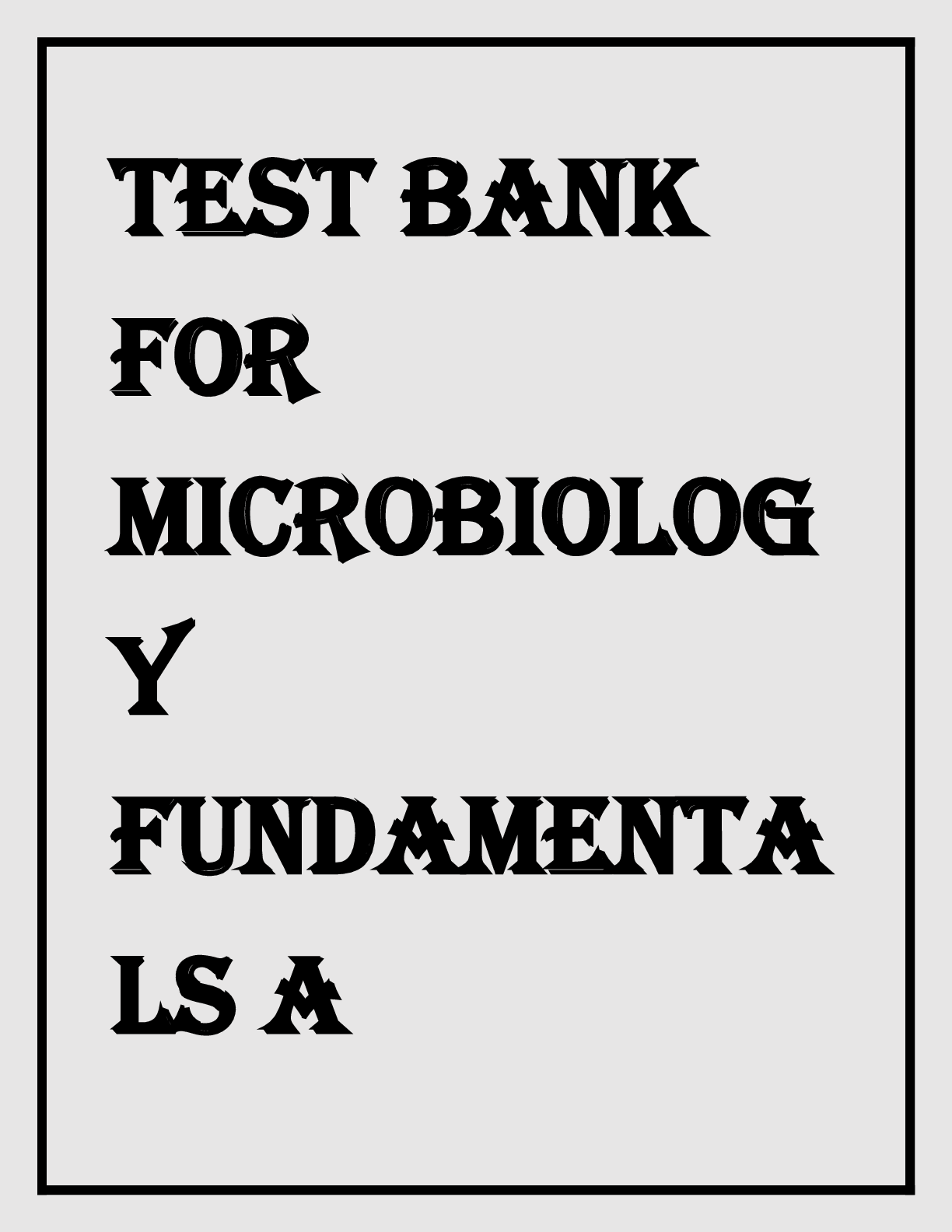
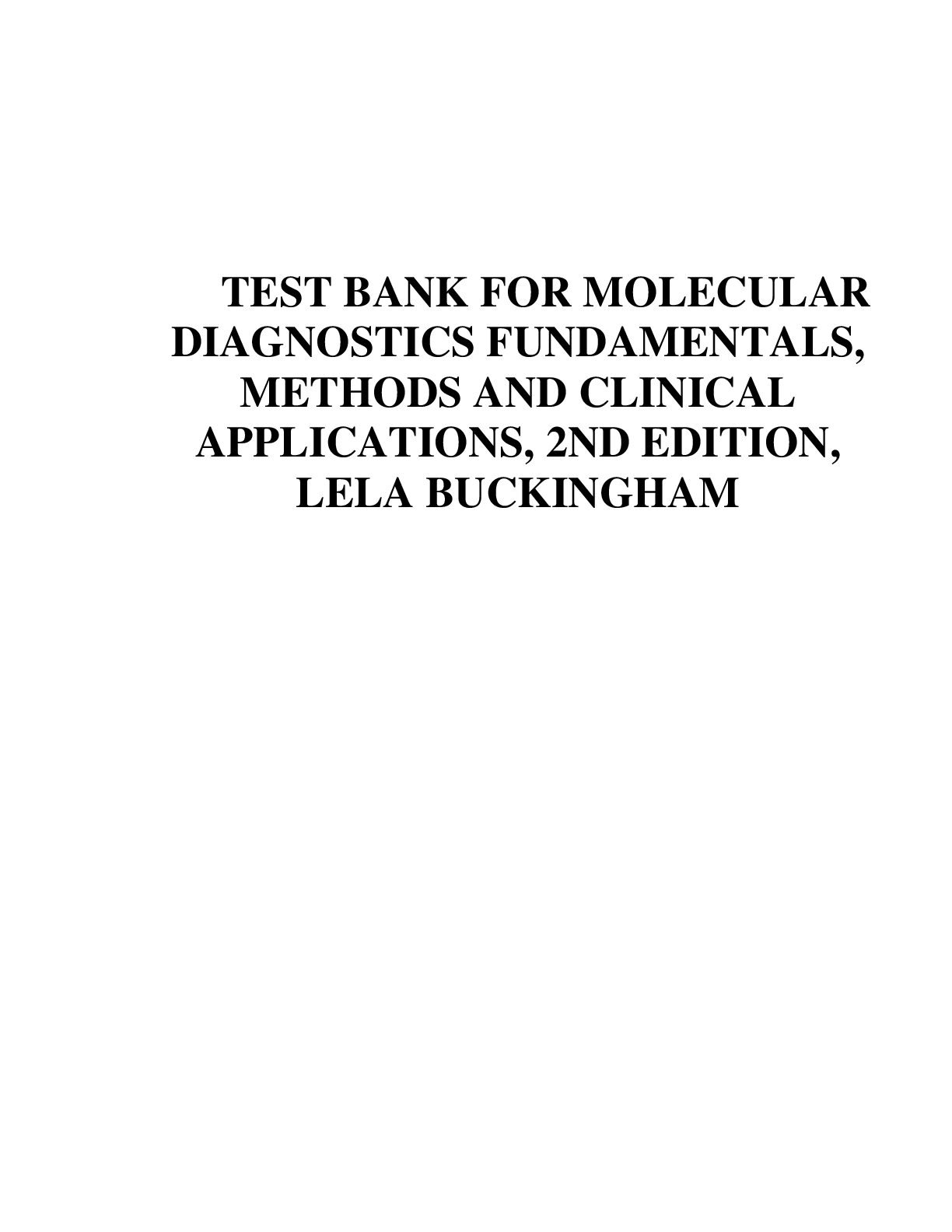

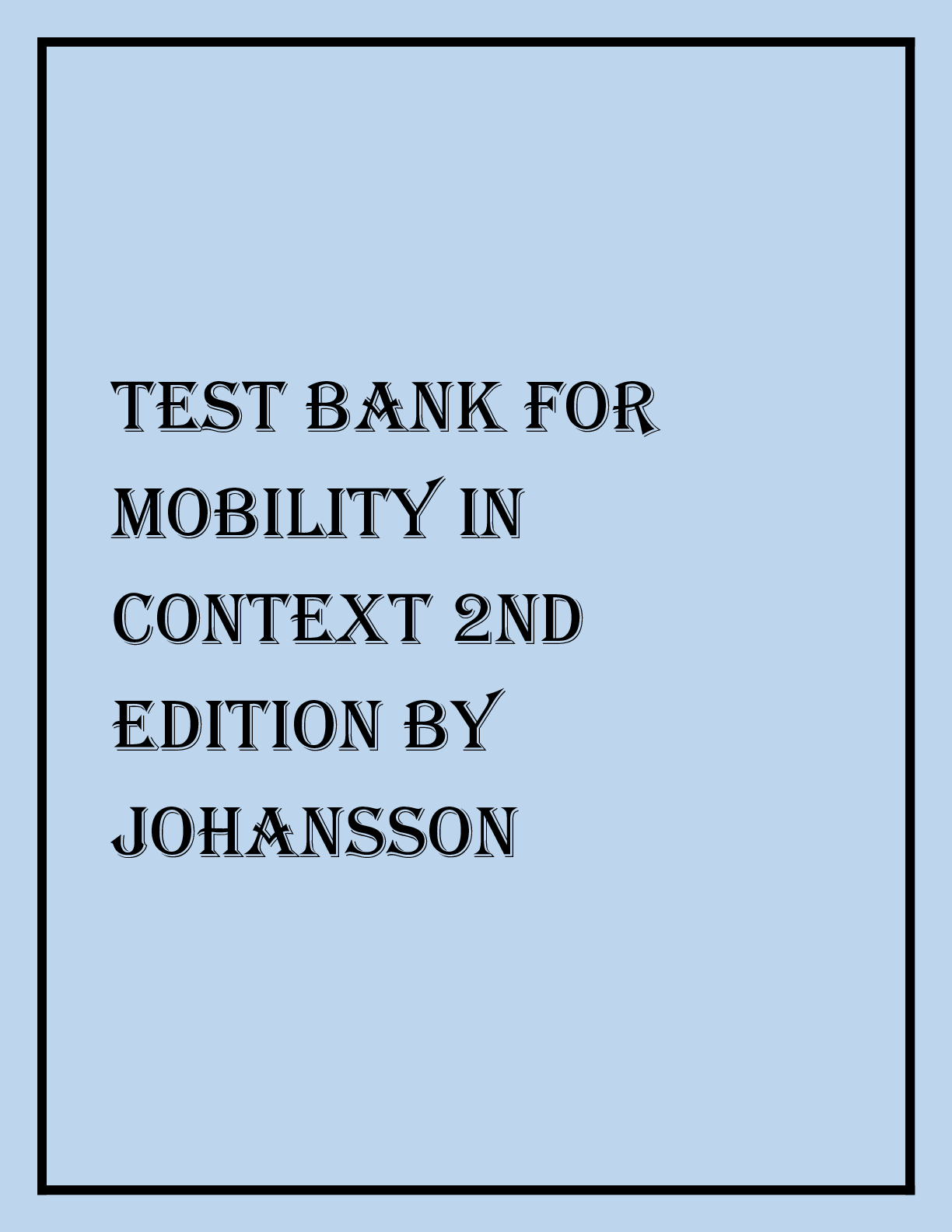
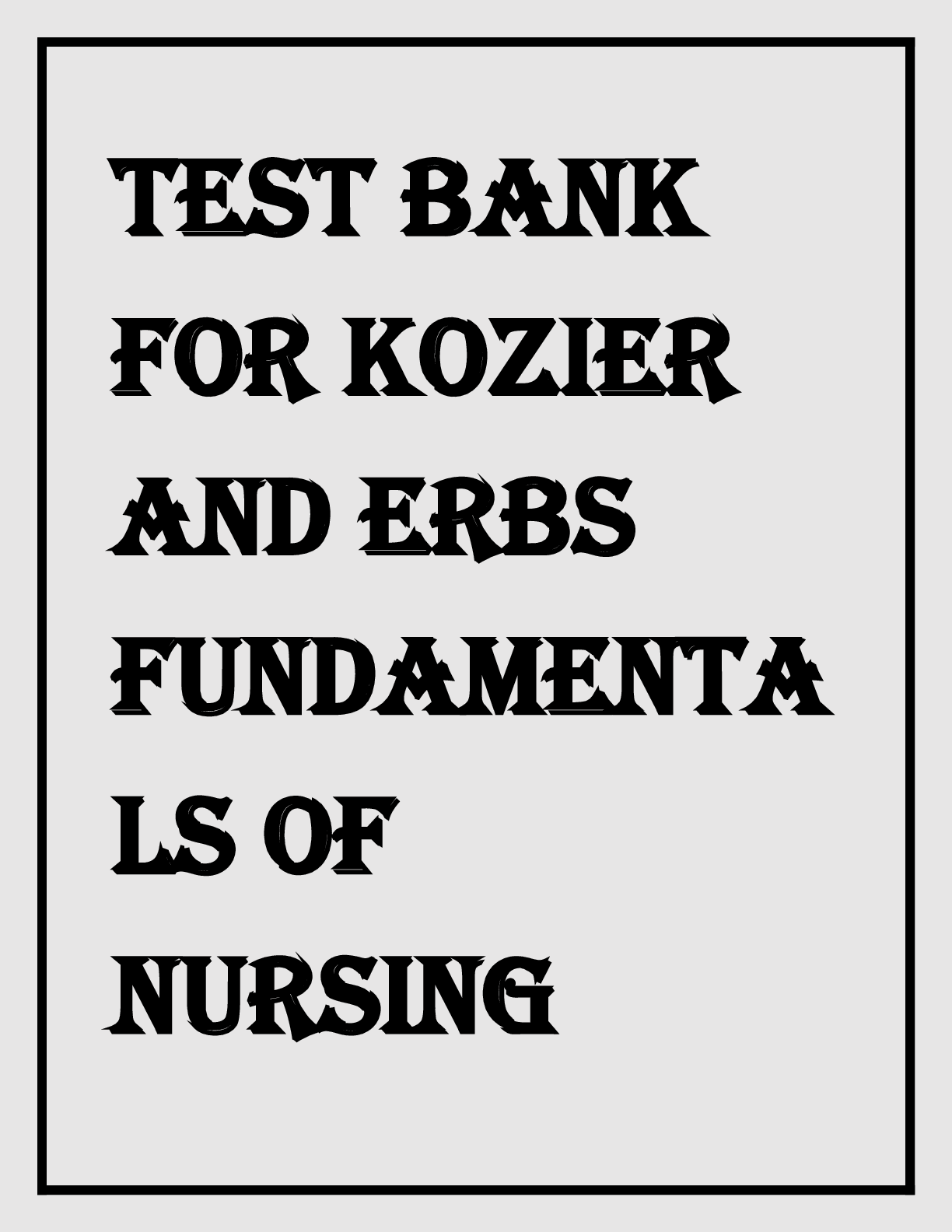
.png)

